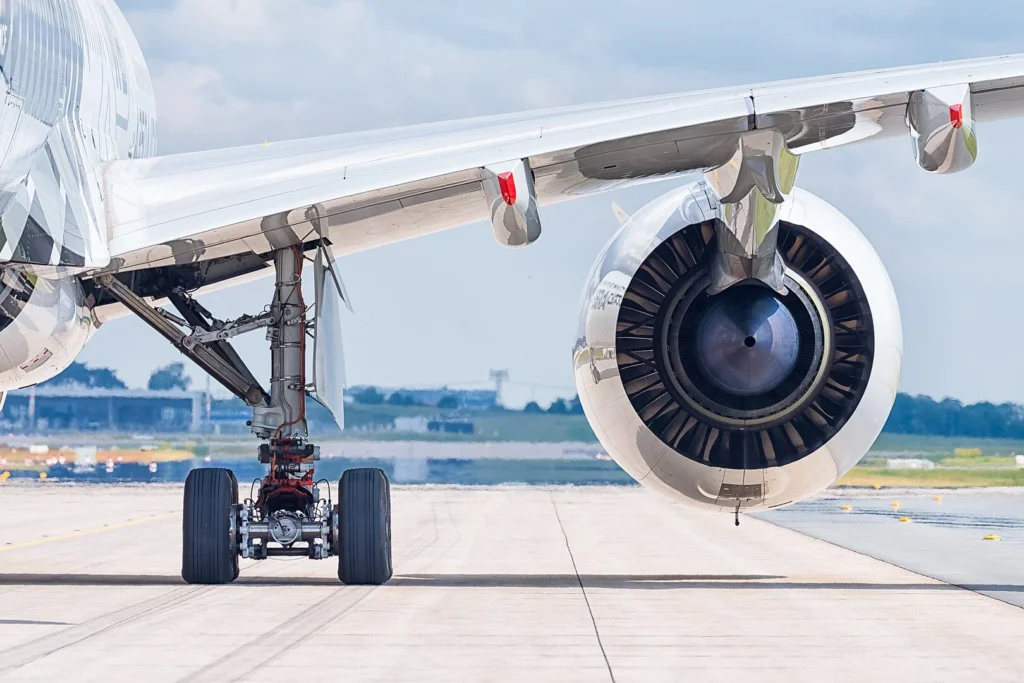
COLOGNE- The European Union Aviation Safety Agency (EASA) mandates inspections of Airbus A350 aircraft following a Cathay Pacific Airways (CX) engine fire incident.
This directive aims to identify faulty fuel hoses and prevent similar occurrences.
 Photo: By Julian Herzog, CC BY 4.0, https://commons.wikimedia.org/w/index.php?curid=56308989
Photo: By Julian Herzog, CC BY 4.0, https://commons.wikimedia.org/w/index.php?curid=56308989EU Airbus A350 Inspection
EASA’s statement, released Thursday evening, outlines a precautionary one-time fleet inspection. The agency targets potentially compromised high-pressure fuel hoses, focusing on a specific portion of the A350 fleet.
The inspection’s details, requirements, and compliance timeline remain under development. EASA plans to issue an emergency airworthiness directive later Thursday, providing comprehensive guidelines.
EASA’s decision stems from preliminary information gathered by ongoing safety investigations. Key contributors include Hong Kong’s Air Accident Investigation Authority, the city’s civil aviation authority, and manufacturers Airbus and Rolls-Royce.
The Cathay Pacific incident resulted in 90 flight cancellations, highlighting the potential impact of such technical issues on airline operations and passenger travel.
 Photo: By Anna Zvereva from Tallinn, Estonia – Cathay Pacific, B-LXL, Airbus A350-1041, CC BY-SA 2.0, https://commons.wikimedia.org/w/index.php?curid=87445090
Photo: By Anna Zvereva from Tallinn, Estonia – Cathay Pacific, B-LXL, Airbus A350-1041, CC BY-SA 2.0, https://commons.wikimedia.org/w/index.php?curid=87445090Fleet Grounding
Cathay Pacific grounded its entire A350 fleet after discovering a unique engine part problem. The issue emerged when flight CX383 returned to Hong Kong shortly after takeoff on Monday.
The European Union Aviation Safety Agency (EASA) confirmed a fire in the Rolls-Royce Trent XWB-97 engine during the flight. Crew members promptly detected and extinguished the fire, allowing the aircraft to return safely.
This incident triggered inspections by other airlines using the same engine model. Cathay’s A350 fleet consists of 18 A350-1000 aircraft (average age 4.6 years) and 30 A350-900s (average age 6.2 years), all equipped with the Trent XWB-97 engine.
 Photo: RVA Aviation Photography (Robin Van Acker) | Flickr
Photo: RVA Aviation Photography (Robin Van Acker) | FlickrWhat’s the Issue and Who Are Affected?
Rolls-Royce faces pressure to explain the fuel line failures in their Trent XWB-97 engines. A source revealed deformed fuel transfer lines caused the engine malfunction, noting Cathay Pacific had no mandate to inspect or replace these components.
Cathay Pacific identified 15 A350 aircraft requiring fuel line replacement. Six have been repaired and cleared for operation, with the remaining nine expected to resume service by Saturday.
Cirium data shows that 87 A350-1000 passenger planes currently use the Trent XWB-97 engine. Qatar Airways (QR) operates 24, Cathay Pacific 18, and British Airways (BA) 17.
Japan Airlines (JL) conducted independent inspections on its five A350-1000 aircraft at Haneda Airport, finding no issues. Their A350-900 fleet also passed precautionary checks.
Singapore Airlines (SQ) plans to inspect all 64 of its A350-900 aircraft engines as a precaution, maintaining communication with Airbus and Rolls-Royce. They assure no flight disruptions.
What are your thoughts on Airbus A350 engine issues? Will it affect other carriers? Let us know in the comments.
Join us on Telegram Group for the Latest Aviation Updates. Subsequently, follow us on Google News.
Cathay Pacific Grounds 48 A350s After Rolls-Royce Trent Engine Issues
The post EASA Orders Airbus A350 Inspection After Cathay Engine Fire appeared first on Aviation A2Z.

 1 rok temu
1 rok temu






![Koszmar nadchodzi znienacka. Właściciele niczego nie wiedzą dopóki w drzwiach nie pojawi się komornik. Akt notarialny nic nie pomoże [25.12.2025]](https://warszawawpigulce.pl/wp-content/uploads/2025/11/Drzwi-kontrola-pukanie.webp)

